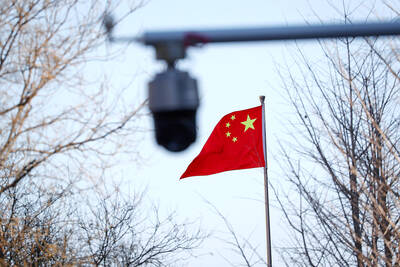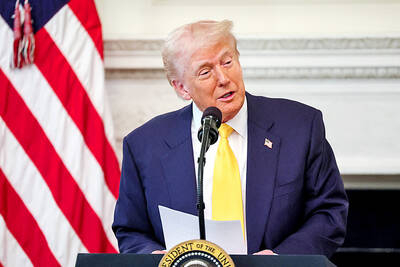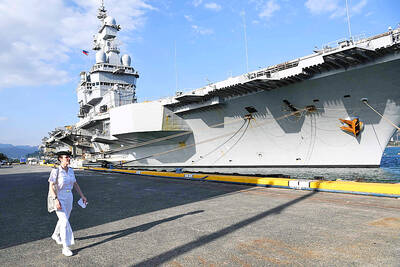Wall Street’s rollercoaster ride showed no sign of ending over the past week as the market churned lower and waited for help from Washington in easing the deep economic crisis.
In the week to Friday, the main indexes lost ground as investors appeared confused by the Obama administration’s bank rescue plan and awaited implementation of a massive economic stimulus.
The Dow Jones Industrial Average slid 5.2 percent over the week to end Friday at 7,850.41, reversing course after gains in the prior week. The tech-rich NASDAQ composite fell 3.6 percent to 1,534.36 and the broad-market Standard & Poor’s 500 tumbled 4.8 percent to 826.84.
The sputtering action on Wall Street, which gets a respite with the Presidents Day holiday tomorrow, has been a reaction to news from Washington as economic reports show the recession deepening.
The markets saw renewed turmoil after US Treasury Secretary Timothy Geithner unveiled a bank rescue plan that was short on details, disappointing many investors. The indexes were unable to recover in the week from Tuesday’s slide.
“The problem with Secretary Geithner’s announcement — and the reason for an almost 5 percent drop in stocks after it was announced — is the continued lack of detail on exactly how the plan will be implemented,” economist Ethan Harris at Barclays Capital said. “Even with aggressive policy action, the markets will punish any lack of clarity or sign of hesitation from policy makers.”
Harris said the market’s fragility “comes from repeated false recoveries in the market and the sense that aggressive policy is the only thing preventing a much more severe recession and capital markets sell-off.”
“The policy playbook is simple: don’t promise more than you can deliver, don’t promise big programs without explaining how they will work, and don’t outline how bad the economy is unless you immediately offer a clear, credible turnaround plan,” he added.
Michael Jones, chief strategist at Riverfront Investment Group, said the new administration “missed a golden opportunity to restore market confidence.”
John Ryding at RDQ Economics pointed out that the markets were disappointed but could recover as details of the plan to help banks remove toxic assets from their balance sheets emerge.
“We are looking forward to getting more information on the [plan] in the very near future and, if properly designed, we think it will be well-received by the markets,” Ryding said.
David Kotok at Cumberland Advisors said the stock market is losing confidence in the new administration.
“We see a Washington in disarray. We see repeated failure in assembling a cabinet,” he said. “What we don’t see is a stimulus bill that will put people back to work promptly.”
Fred Dickson, market strategist at DA Davidson, said markets remain nervous about the impact of the massive economic stimulus and reports that the administration will unveil a new program to help struggling homeowners who are facing defaults.
Bonds gained as investors sought shelter from the turmoil. The yield on the 10-year Treasury bond fell to 2.882 percent from 2.979 percent a week earlier, and that on the 30-year bond eased slightly to 3.682 percent from 3.683 percent. Bond yields and prices move in opposite directions.

AT RISK: The council reiterated that people should seriously consider the necessity of visiting China, after Beijing passed 22 guidelines to punish ‘die-hard’ separatists The Mainland Affairs Council (MAC) has since Jan. 1 last year received 65 petitions regarding Taiwanese who were interrogated or detained in China, MAC Minister Chiu Chui-cheng (邱垂正) said yesterday. Fifty-two either went missing or had their personal freedoms restricted, with some put in criminal detention, while 13 were interrogated and temporarily detained, he said in a radio interview. On June 21 last year, China announced 22 guidelines to punish “die-hard Taiwanese independence separatists,” allowing Chinese courts to try people in absentia. The guidelines are uncivilized and inhumane, allowing Beijing to seize assets and issue the death penalty, with no regard for potential

STILL COMMITTED: The US opposes any forced change to the ‘status quo’ in the Strait, but also does not seek conflict, US Secretary of State Marco Rubio said US President Donald Trump’s administration released US$5.3 billion in previously frozen foreign aid, including US$870 million in security exemptions for programs in Taiwan, a list of exemptions reviewed by Reuters showed. Trump ordered a 90-day pause on foreign aid shortly after taking office on Jan. 20, halting funding for everything from programs that fight starvation and deadly diseases to providing shelters for millions of displaced people across the globe. US Secretary of State Marco Rubio, who has said that all foreign assistance must align with Trump’s “America First” priorities, issued waivers late last month on military aid to Israel and Egypt, the

‘UNITED FRONT’ FRONTS: Barring contact with Huaqiao and Jinan universities is needed to stop China targeting Taiwanese students, the education minister said Taiwan has blacklisted two Chinese universities from conducting academic exchange programs in the nation after reports that the institutes are arms of Beijing’s United Front Work Department, Minister of Education Cheng Ying-yao (鄭英耀) said in an exclusive interview with the Chinese-language Liberty Times (the Taipei Times’ sister paper) published yesterday. China’s Huaqiao University in Xiamen and Quanzhou, as well as Jinan University in Guangzhou, which have 600 and 1,500 Taiwanese on their rolls respectively, are under direct control of the Chinese government’s political warfare branch, Cheng said, citing reports by national security officials. A comprehensive ban on Taiwanese institutions collaborating or

France’s nuclear-powered aircraft carrier and accompanying warships were in the Philippines yesterday after holding combat drills with Philippine forces in the disputed South China Sea in a show of firepower that would likely antagonize China. The Charles de Gaulle on Friday docked at Subic Bay, a former US naval base northwest of Manila, for a break after more than two months of deployment in the Indo-Pacific region. The French carrier engaged with security allies for contingency readiness and to promote regional security, including with Philippine forces, navy ships and fighter jets. They held anti-submarine warfare drills and aerial combat training on Friday in